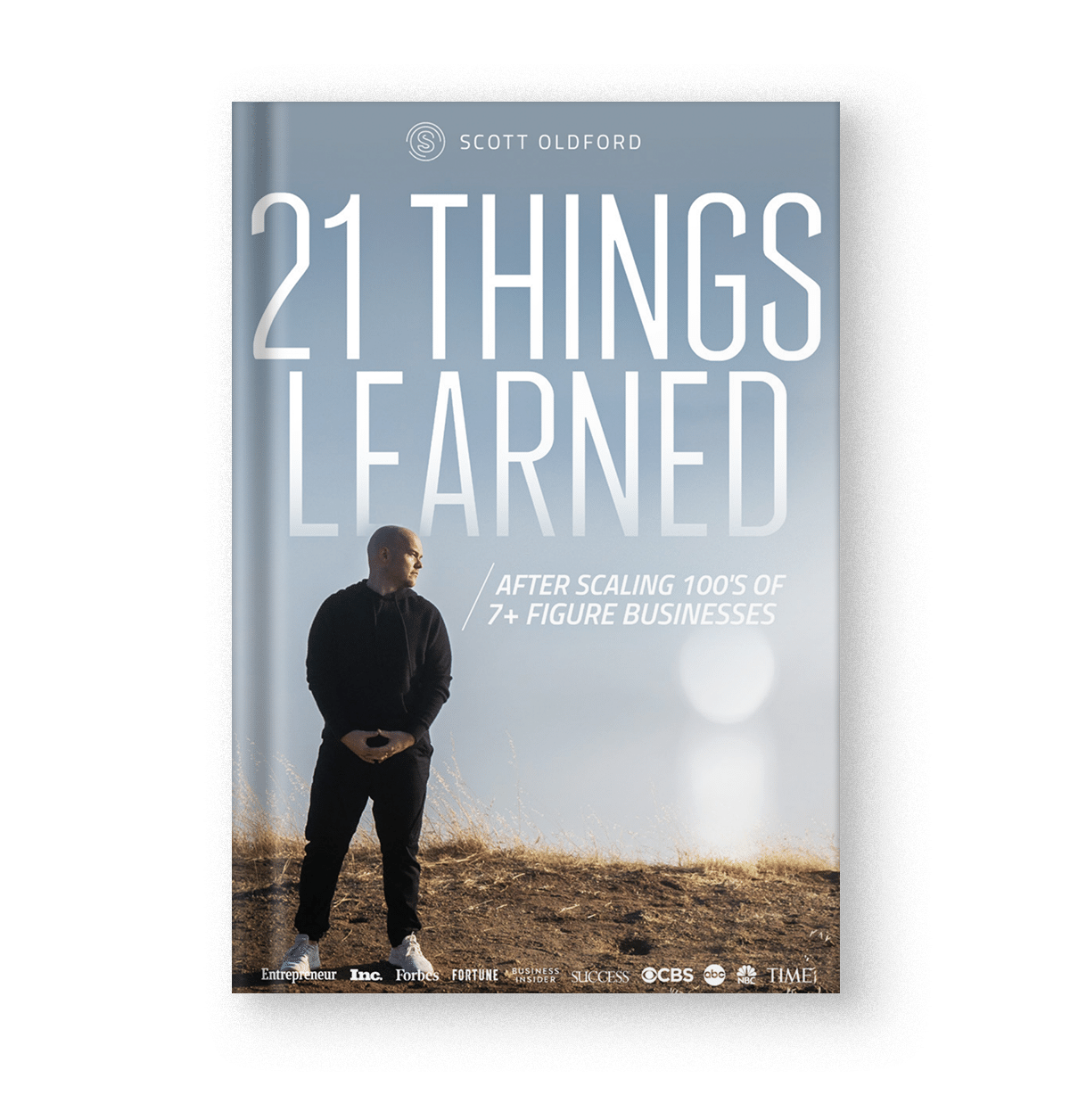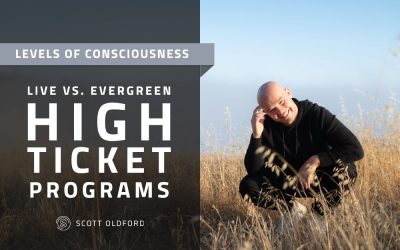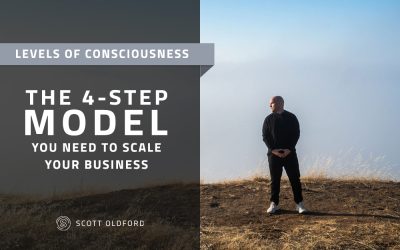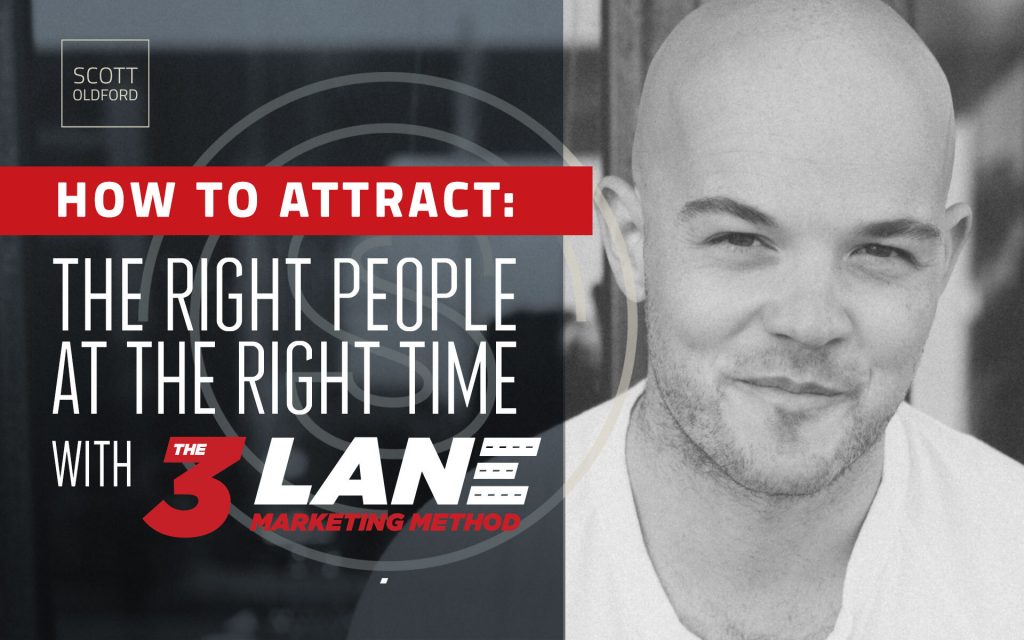
Marketing Messaging Strategy
It seems like it happens to everyone.
You start attracting a good number of leads to your business, and you think that you’re doing a good job marketing your business.
Then you find that most of your leads are the wrong people who are not the perfect fit for your products or services. What’s worse is that sometimes they are the right fit but the timing isn’t right for them, so by the time they are a good fit, you would probably have done more wrong than right for them throughout the followup process, which makes them go to your competitors.
On the other hand, your competitors seem to have a higher ROI than yours without needing many leads. The main reason? You aren’t getting your marketing messaging right. You don’t know which content to post and when to post it to get the right customer at the right time with the right mindset.
Today, we’re going to solve that. You’re going to discover the “3 Lane Marketing Messaging Framework” (the SSF Method) that helps simplify the process and increase your return on investment at the same time so you can scale your business past 7-figures. But first…
Why Marketing Messaging Could Make Or Break Your Business
One of the things that people tend to ignore is marketing messaging because it’s not something cool to focus on like getting your FB ads cost down, getting more clicks to your site, and so on. But messaging is a critical piece of all your marketing efforts. If you get this wrong, you’re going to attract the wrong people in the wrong mindset at the wrong time.
That’s why it’s a core piece of Relevancy inside of the Relevancy, Omnipresence, and Intimacy method.
Here’s the thing: The reason why some marketing works and some marketing doesn’t depends on whether or not it allows a person to feel seen and heard in a way that they haven’t felt seen and heard in a long time. And marketing messaging is all about finding someone based on the stage where they’re at, and presenting their problems and their pain and their vision and what they’re going through back to them.
Get your marketing messaging wrong and you’re going to attract either the wrong quality of people, the wrong sophistication of people, or the wrong people for different offers. So if you have a $10,000 offer and your marketing messaging’s attracting people that only have $50 to spend, then there’s going to be a mismatch.
So how can you know the right message to put out to attract the right person? Let me introduce you to…
The 3 Lanes of People Coming to Your Business (And Why Traditional Funnel Advice Doesn’t Work)
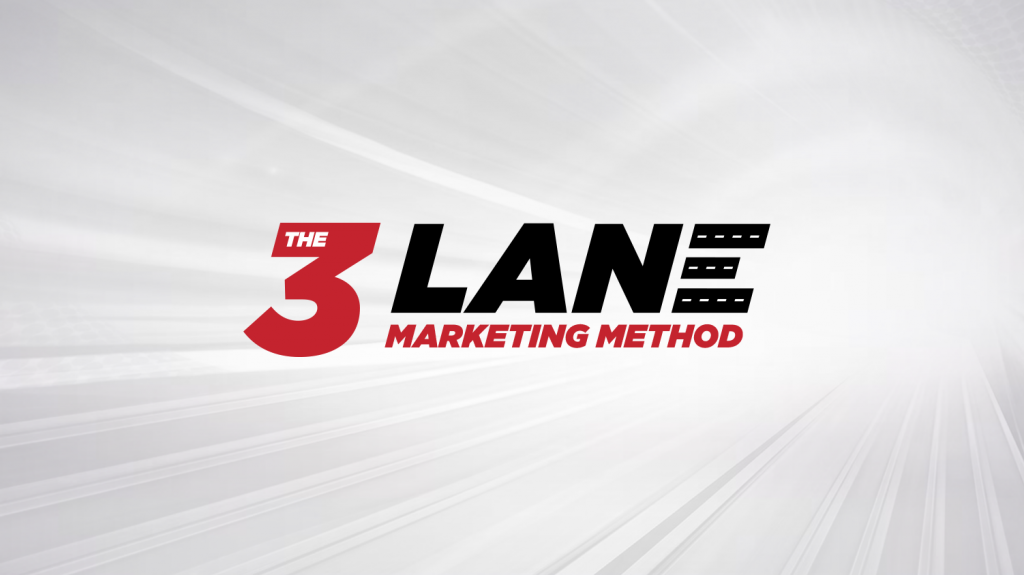
The reason why traditional funnel advice is not working well nowadays is because it’s designed to convert a very small number of people and try to increase order value as much as possible.
It looks great, but when you couple that with the increase in FB ads and the skepticism that people have nowadays because they know that your countdown never reaches zero, it’s very difficult to scale a sustainable business this way.
So, what’s a better way to deal with this? Forget what you know about funnels. Here is what you should know… Everyone in your audience doesn’t have the same issue, and not everyone is at the same stage in their journey.
In short, everyone has a different mindset. Your job is to share the right message with the right people at the right time. And this is the premise of the SSF Method that I developed a few years ago and that helped me generate tens of millions of dollars.
Basically, your audience is in one of 3 lanes:
The SSF Method Breakdown
The Sidewalk
People on the Sidewalk are still in the phase of trying to understand their problem, or they might even just be unsure about the nature of their pain or problem. They might feel pain, but they don’t actually understand why they’re experiencing that pain.
For example, somebody who doesn’t know why they can’t scale their business doesn’t really understand the way that online marketing works or why they put messages out but don’t get results. That’s why they’re stuck inside the 6-figure hamster wheel. They may not even fully comprehend that they are caught in hustle-mode.
The Slow Lane
People are in the Slow Lane when they know that they have a pain and/or a problem and they have accepted this fact. Now they’re looking to change that. They need to have a process or a methodology to understand and sort of believe in.
They need to go from, “Yeah, I’m experiencing pain,” to, “Okay, there is an actual way to go from who I am today to who I want to be,” and there’s a gap in between that. And your job here is to introduce them to your methodology/process, so you can show them what life at the end of the tunnel looks like. You need to give them something to buy into, but also give them a reason to buy into YOU as an authority figure.
Can you see the difference in mindset and the marketing messaging that you need for this group and the previous one? Don’t worry if you don’t know how to fit the pieces together, because that’s what you’re going to discover next. But before we get to that, here’s the last lane.
The Fast Lane
People are in the fast lane when they know the solution and believe in it enough that they’re ready to dive in, pull the trigger and start applying the solution to their life or business to solve that nagging pain/problem. They start to say “I’m ready to spend my energy, my time, and my money to be able to do this.”
This is when you make the money. The problem with traditional marketing is that they try to market to all people as if they are in the fast lane, and only 3% of your audience are actually in the fast lane and committed to solve their problem.
Maybe you think that 3% is enough, and for a long time it was what marketers focused on, but with the increased cost of acquiring a customer and skepticism of people it became very expensive, more competitive, and the ability to get someone to say yes is now incredibly difficult. And by rushing them directly into the fast lane, they’re not going to understand your process and believe that it can help them, which makes you less money over the long run.
But instead, if we can get somebody and teach them how something works, explain our process to them, show them our proof, be able to bring them towards us, then we’ll be able to transfer them from the slow lane to the fast lane. And this gives us the blue ocean effect in the fast lane, making it so that we can charge more, so that we can actually give them our product and that we can really help them in the best way possible.
If you’re worried about how to actually use the data above and apply it the right way, then you need to check out the “The 3 Lane Marketing Messaging Framework.”
If you want to grab a PDF of this post to be able to reference it later since this post is valuable and contains a lot of important insights that you would need in your business moving forward…
The 3 Lane Marketing Messaging Strategy Framework – How to Appear In Front of The Right Person At The Right Time
When I wanted to show my clients and students how this all works and make it easier, I ended up developing the 3 Lane Marketing Messaging Framework, which is built on top of the SSF method. The goal was to make anyone, no matter what their business or audience, be able to use it to scale their empire to the next level.
Here’s what it looks like in a nutshell:
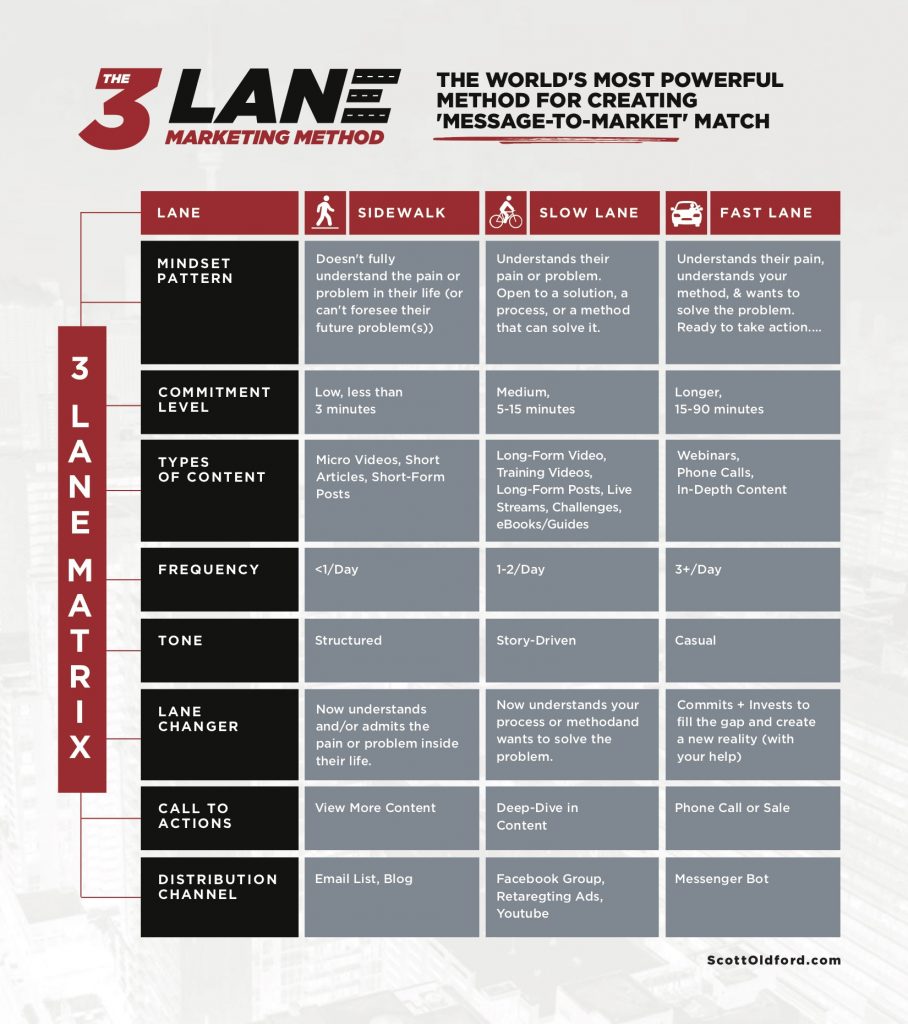
This marketing messaging framework will help you to effectively move people through the lanes and create the perfect piece of content to appear to them at the right time at the right place, and in the process, you’ll become the “go-to” expert your audience needs.
Here’s a quick training video that I recorded to guide you through this marketing messaging framework:
Mindset Pattern and Positioning
The first part to understand in the 3 Lane Marketing Messaging framework is the psychology of the people we’re actually dealing with, and what you need to know to position your content for those people.
So basically every person in a given lane has a different mindset than the people in the other lanes. And you need to understand what they want to see at this point to resonate with you.
Sidewalk Mindset
Although those in your Sidewalk show the symptoms of pain, they don’t understand what the problem is (or that they even have a problem). Your job is to introduce them to their pain/problem, and relate to them on their level. Illuminate their pain and give them the opportunity to realize their problem. Until they do, you cannot help them.
So what should you know here?
1. Their pain: You need to dig deep into the pain they’re experiencing. You need to understand all the symptoms and describe their pain clearly, so they know that you understand them well. For example, a pain point of “not knowing where to begin with starting a business” can be illustrated with:
“You click the link and open up yet another article on how to get started online. You’re always endlessly reading blog posts, or watching YouTube video after YouTube video, desperately looking for someone who can help you. The ache inside your chest of KNOWING you’re meant for more only gets stronger as you once again, find no answers for the questions inside you.”
Do you see how vivid this is? Be empathetic and put yourself in their shoes.
2. Their Problem: This is what they actually experience because of their pain. It’s the underlying thing that causes the pain.
You need to be clear on what they think is the problem, and what is the actual underlying problem causing the pain.
3. The Consequence of them actually not dealing with this: Here you’re just shedding light on what might be the worst that could happen and describing it clearly to them.
So to put the above points in perspective, if you were a relationship coach working with couples: The pain might be the fact that your communication’s not good. The problem is the fact that they’re not able to have a deep relationship with a lot of intimacy. The consequence is that if it keeps on going on, they might not end up being a couple anymore.
Of course, you need to go deep and illuminate the points above to describe them vividly to the person who’s on the sidewalk.
Slow Lane Mindset
Those in your Slow Lane understand they have a problem, and they want to overcome their pain. But at this stage, they are unsure how, and may not even know there’s a solution out there. As I stated before, your job is to introduce them to your methodology/process, so you can show them what life at the end of the tunnel looks like. You need to give them something to buy into, but also give them a reason to buy into YOU as an authority figure.
So here’s what you should know here: 1. Story: The story is your brand’s story. You need to show them that you are the one who had pain and problems like them and how you discovered the solution. Like how I talk about how I was in debt and why I shut down a multi-million dollar business.
2. Process: This is your specific methodology on being able to take that person from A to Z, fill the gap, and bring that person to the point of being able to do what they really want in life.
3. Proof: You need to show proof that you are the authority, whether it’s your PR, or testimonials, or case studies. This is all about allowing someone to see you’re the person that they need to be looking to and following when it comes to this stuff.
Having these 3 points will help you move someone from just knowing their pain and problem to knowing the process to solve it and why you’re the one to help.
Fast Lane Mindset
Finally, those in your Fast Lane are ready to pull the trigger and overcome their problem. They understand it enough to take action and simply need convincing that the life they could have is better than their current one. Your job is to show them what life on the other side looks like and how your solution will transform their reality for the better.
So here’s how you position your marketing message for people in the fast lane: 1. Objections: What are the biggest fears/ objections that your client has when investing in offers like yours? List those objections and beneath each objection list a counter on why your product/service works EVEN IF… The most powerful way to make something objection-proof is to handle it before the other person actually brings it up.
2. Vision: Vision is getting the person to see what life is going to be like if they actually have the solution, what life’s going to be like if they take the pain and the problem out of the equation and they no longer have to deal with the consequence.
3. Action: What is the action they need to take to move forward and start working with you? It depends on what stage of the funnel the client is in. You need them to say, “Yes. Do you know what? I commit to doing this. I’m going to spend my time, my energy, and my money to allow you” (you being the business) “to help me get to my vision.”
The best part is most of the things you need above should be already created with your 360 Degree Customer Avatar Exercise. Check it out here, if you haven’t done so yet. This is mindset. It’s the first (and possibly most important) thing to take into account in The 3 Lane Marketing Framework. It sets the tone for everything else, because until you tap into what your audience is thinking/feeling, it’s hard to become relevant and trustworthy.
If you didn’t yet, make sure to grab a PDF of this valuable post and a copy of the 3 Lane Marketing Messaging Framework Matrix.
Commitment Level – How Long Are They Willing to Commit to You?
If someone is in the Sidewalk, do you think sharing a 60+ minute webinar will work?
What about if someone is in your Fast Lane… will a quick guide convince them to send you $5,000?
Of course not. Different lanes require different commitment levels. Where your audience is at on their journey (and how well they trust you) affects the time they’re willing to commit to you.
If someone is on your Sidewalk, they don’t yet care much about you or what you have to say. You’re just another person popping up in their newsfeed, so if you do manage to capture their attention, they’ll only give you 3 minutes (or less) of their time.
Those in your Slow Lane are willing to give you a little more time… 5-15 minutes. The video above is an example of this: a slow lane video that gives in-depth content but is still brief and on-point.
In the Fast Lane, your audience will typically commit up to 60 minutes of their time on you. At this stage you have earned their trust, so you can go deeper with them through a book or webinar.
The content you create NEEDS to take your audience’s commitment level into account. It doesn’t matter how valuable your content is if it’s too short or too long. It only matters if they actually consume it, and each lane will only commit so much of their time to you.
Types of Content – Which Piece (And Content Type) Is Relevant to Them
The content you create depends on the commitment your audience is willing to give you. This isn’t about quantity. However short or long your content is, quality always matters. But as important as this is, it also needs to be RELEVANT to them… so make sure the content you create is relevant to the type of audience you share it with.
People in your Sidewalk will only commit up to 3 minutes of their time, so you need to capture their attention with Short/Micro Content. A short Facebook post may work, or a brief video might hold their attention. This could also come in the form of a short guide that provides a specific piece of actionable training.
With those in your Slow Lane, you can go into greater detail with a more in-depth guide, a training video like the one above or tactical articles or short books. You have up to 15 minutes to impact them, so your content needs to take this into account.
In the Fast Lane, you can go deep with someone because they’re engaged and ready to take action. You can have 30 or even 60 minutes of their time. This may come in the form of a book or webinar, but also a 1-1 call where you dive into their specific situation. They’re really looking to be able to make a decision because they know how much their new reality’s going to really help them.
At all times, your content needs to be relevant and relatable, and consider the commitment your audience is willing to give. Quality is always important, but without relevance it means little.
What you prepared in the mindset part will come in handy here. You will put this info into the above formats depending on their lane.
Frequency – How Often Do You Need to Be in Front of Them?
Once you create relevant content, you need to make sure you share it with your audience at the right time. How you share this can come in many forms: email, social media, online ads, retargeting… It’s important to not do too much, but it’s also just as important to not share too little.
After all, to become the “go-to” expert for someone, you have to be in the very forefront of their mind. I refer to this as being TOP OF MIND. Your audience needs to see you often, and ‘buy in’ to the idea that you are the authority figure they need in their life.
In the Sidewalk, they only want to see you show up once per day (at the most). Whether this is in their inbox or newsfeed or elsewhere online, they don’t need to see you everywhere because they’re still beginning to trust you.
Once they are in your Slow Lane, you need to get in front of them every day (1-2 times), ideally across multiple platforms.
Whereas you should show up to those in your Fast Lane 2+ times each day: in their inbox, newsfeed and anywhere else of value. Part of The ROI Online Marketing & Sales Method focuses on Omnipresence, which is this notion of becoming “top of mind”.
And this is really what Omnipresence is about. It’s being able to time things at the right time with the right frequency, so we’re able to take someone to a new level of thinking. But this DOES NOT mean show up 15+ time per day to everyone. You need to show up in the right way, at the right time, and at the right frequency. Get this wrong and you’ll become an annoying mosquito instead of a “go-to” authority.
Tone – How to Sound Right for Your Audience
The tone you use for different elements of your audience also matters. Some of your audience knows you well, so you want to be more casual and open with them. But for those who have only just come across you and your work… you may put them off.
You need to take all three lanes into account, and tweak your tone accordingly…
Those on your Sidewalk want to see more structured and formal content because they don’t yet trust you. They don’t care about your story or anything like that. All they care about is whether you offer value and are you someone worth following.
In your Slow Lane, they want to hear your story. They need to get to know you, and you need to build their trust. Storytelling is the best way to do this, as is sharing your story and journey with them.
Once they get into your Fast Lane, you can connect with them on a deeper level. They crave to see the “real” you, which means you can open up and share your unfair advantage. You start getting paid for who you are and how you work. Be yourself, be casual and share the same tone you would with friends and peers.
This is another reason why the traditional approach of sharing the same message with everyone no longer works. Different people at different stages want to see a different version of you. Your tone plays a big part in this, so take it into account when you communicate with your different lanes.
Lane Changer – What Gets Them to the Next Point?
This is a huge part of the 3 Lane Marketing Messaging Framework because at the end of the day you want to move your audience from Sidewalk ⇒ Slow Lane ⇒ Fast Lane ⇒ Loyal Customer.
As your audience gains clarity and gets to know you better, they’ll naturally progress through these lanes. But you can make this transition easier for both you and them by being intentional about how you move them from lane-to-lane.
So what gets them to the next point?
To move someone from the Sidewalk to the Slow Lane, they first need to understand (and admit to) the pain they’re feeling and the problem they have. You need to illuminate this for them, and they need to gain clarity.
For someone to move from the Slow Lane to the Fast Lane, they need to understand and appreciate your process/methodology, and get to the stage where they want to solve their problem. Trust also plays a large role here, because someone won’t move into your fast lane until they trust you and see you as an authority.
Finally, in the Fast Lane… they need to “buy into” their New Reality and appreciate what life will look like once they work with you. They need to get to the point where they’re ready to invest in themselves (and fill the gap between their Pain + Vision).
If you implement The SSF Matrix properly, this process happens naturally. Your audience will move through these lanes as their trust in you grows (and they see how powerful your methods are).
But by being intentional about this transition, you can make everything smoother by introducing the right Call to Action.
CTA – What Call To Action to Give in Each Lane
It doesn’t matter how good you are and compelling your content/product/offer is… your audience needs YOU to take the reins and prompt them to take action. You need to sell…You need to create options…You need to ask them to pull the trigger…
If you don’t, they won’t overcome their pain and you won’t turn a lead into a customer. It’s as simple as that, which is why your Call To Action (CTA) is so important.
In the Sidewalk, they want to see more information/content. They don’t know you well enough to commit a lot of time (or money), so the best action they can take is to consume more of your content.
In the Slow Lane, they are ready to Deep Dive into your process/method, so you need to create a guide, video training, or short course that not only teaches them your methodology but also lets them do part of the process on their own.
In the Fast Lane, it’s all about introducing them to your offer. At 1MT (and with most of our members inside The Relevancy Engine or Project Nuclear) this almost always includes a Sales Call. But it could include a webinar or course, or anything else that gets them into your “world”.
Just because The SSF Matrix shows you a new way to approach marketing doesn’t mean it goes against all the old rules. You still need to “sell” and create a call to action, but this time it doesn’t feel as “salesy” (and is a whole lot more effective) because you’ve built up their trust.
They don’t need manipulating or convincing, just a little reminder to take action 🙂
Distribution – How/Where to Share Your Content
The final piece of this puzzle is Distribution… and how/where to share your content. This largely depends on your audience and where they “hang out,” so take the following as a guide and tailor it around YOUR avatar.
In the Sidewalk your audience craves micro-content, so much of your distribution centers around social media, your blog, email and PR. It’s all about small content.
Once in the Slow Lane, you need to go deeper in your content, so more in-depth emails work, as does a Facebook group post, a video tutorial on your YouTube channel, landing pages to opt in for a guide or mini sites, and online ads that re-target them based on their consumption so far.
Finally in the Fast Lane, your distribution needs to go deeper still with things like webinars, challenges and courses… but also deeper in terms of personal interaction (Facebook Messenger, more sophisticated retargeted ads, and intimate Facebook Groups/Communities).
Read this post to learn how your can make your content spread like wildfire!
How It All Looks At The End (And How It Affects Your Business)
Here’s a quick image that shows everything at once.

So you have 3 types of people coming through your marketing/funnels. Some will come in the beginning and travel through the whole process, while others will join via the slow lane and some will come at the fast lane. It doesn’t matter for you. Your focus is to provide relevant value to the right people at the right time.
Whether you do this via email funnels, Facebook ads, content marketing or whatever else… you turn your focus away from placing EVERYONE straight into the Fast Lane (which is what the majority of online entrepreneurs do) and instead create three hyper relevant funnels.
And as people are moving through your funnels, you create a waterfall effect. People who joined a few months ago and were originally on the sidewalk are now in the fast lane; meanwhile, you’re still getting new people every day into your funnel. This is what helps you create parabolic growth in your business over the years.
Marketing Messaging Is Just The Tip of The Iceberg
Nailing the marketing messaging and attracting the right people in the right mindset at the right time should be way easier now with the 3 Lane Marketing Messaging Framework. This will help you get more systematic with your lead generation approach, move people closer to purchasing from you, and have higher return on investment, which could help you scale your business faster.
Here’s the thing: The 3 Lane Marketing Messaging Framework is just one piece of the puzzle. It’s one of 8 parts of what it takes to become Relevant which is one part of my Relevancy, Omnipresence, and Intimacy marketing and sales system.
Imagine what 1could happen if you actually nailed all 8 parts of relevancy. What would happen if you nailed the other parts of the whole system? Scaling your business would be a more fun process than you thought. This is why I created this cool resources page that shows you how this method works and how to make it work for YOUR specific business.
If you want to know how to grow your business and scale to the next level, then check out the ROI guide. We’ve helped dozens of businesses owners already, and each day we work with talented people to scale their business from 6 to 7 figures (and then… up toward 8-figures). The 3 Lane Framework plays a big role in this, but it’s only one piece of the puzzle.
So dive deeper and check out how to make The Relevancy, Omnipresence & Intimacy Method work for YOU.
Click here to read about how to position yourself in marketing so you stand out in your industry, and click here to learn more about working together.

